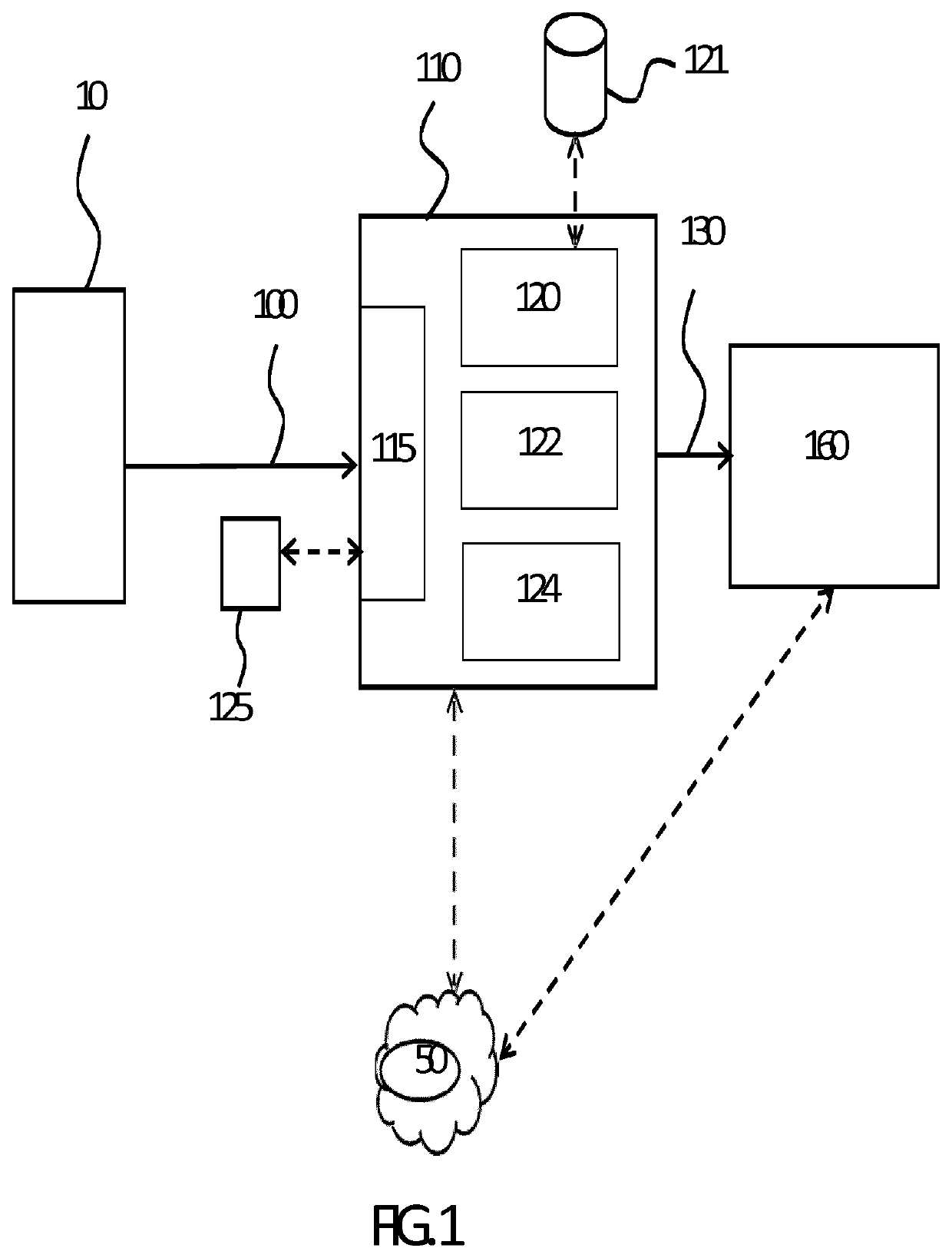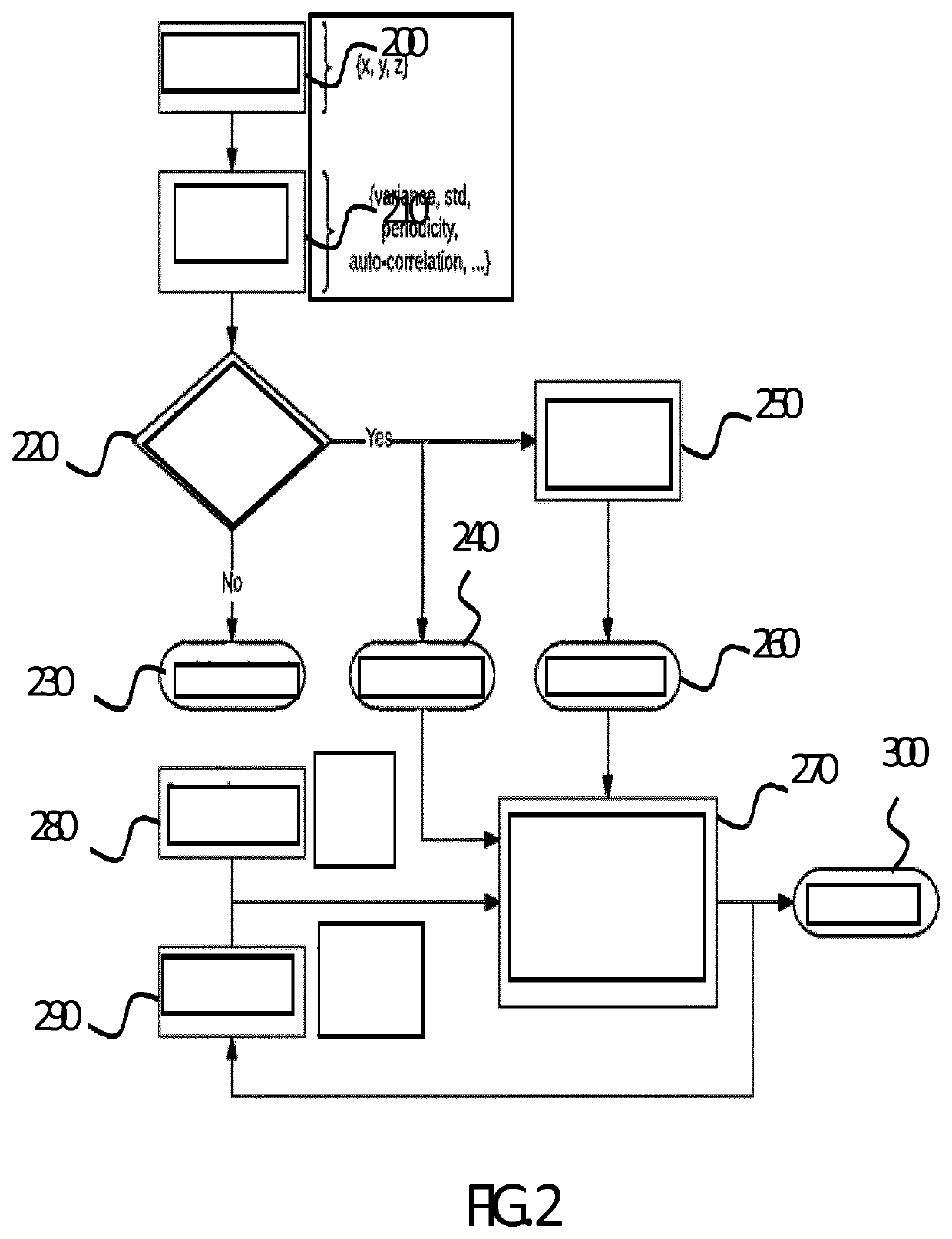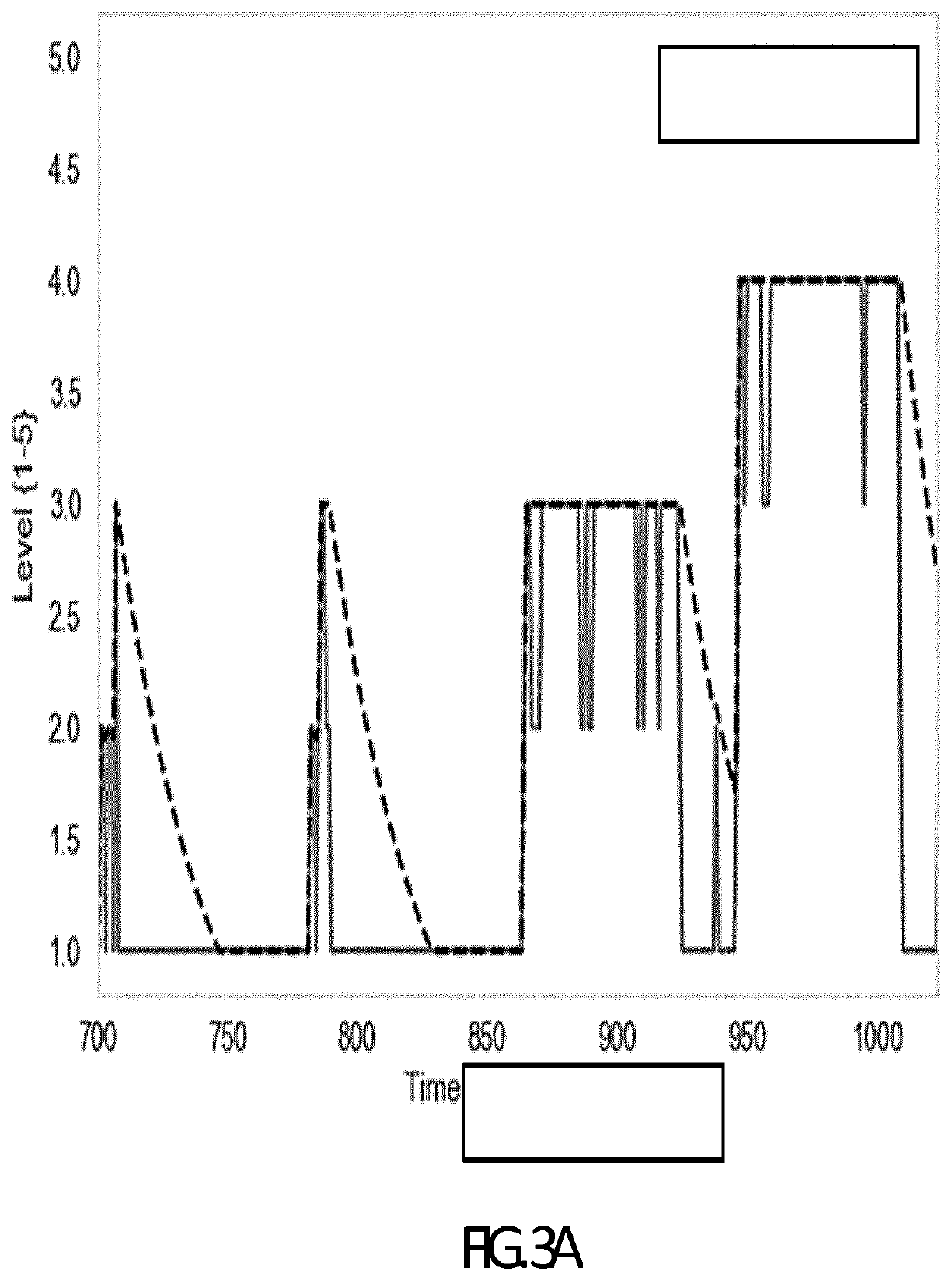Determining reliability of vital signs of a monitored subject
a technology of reliability and vital signs, applied in the field of monitoring subjects, can solve the problems of unattended monitoring, alterations of vital signs of the monitored subject, inaccuracy in derived results, etc., and achieve the effects of reducing the required transmission bandwidth and/or transmission duration, simple, small and/or cheap, and easy acceptan
- Summary
- Abstract
- Description
- Claims
- Application Information
AI Technical Summary
Benefits of technology
Problems solved by technology
Method used
Image
Examples
Embodiment Construction
[0066]Proposed is a concept for determining reliability of vital signs in ambulatory subjects, which may be useful for improving health deterioration assessment and monitoring for example. Such subjects may, for instance, include a disabled person, an elderly person, an injured person, a medical patient, etc. Elderly persons can mean persons above 50 years, above 65 years, above 70, or above 80 years old, for example.
[0067]Illustrative embodiments may be utilized in many different types of monitoring environments, such as a hospital, ward, care home, person's home, etc. In order to provide a context for the description of elements and functionality of the illustrative embodiments, the Figures are provided hereafter as examples of how aspects of the illustrative embodiments may be implemented. It should therefore be appreciated the Figures are only examples and are not intended to assert or imply any limitation with regard to the environments, systems or methods in which aspects or e...
PUM
 Login to View More
Login to View More Abstract
Description
Claims
Application Information
 Login to View More
Login to View More - R&D
- Intellectual Property
- Life Sciences
- Materials
- Tech Scout
- Unparalleled Data Quality
- Higher Quality Content
- 60% Fewer Hallucinations
Browse by: Latest US Patents, China's latest patents, Technical Efficacy Thesaurus, Application Domain, Technology Topic, Popular Technical Reports.
© 2025 PatSnap. All rights reserved.Legal|Privacy policy|Modern Slavery Act Transparency Statement|Sitemap|About US| Contact US: help@patsnap.com



